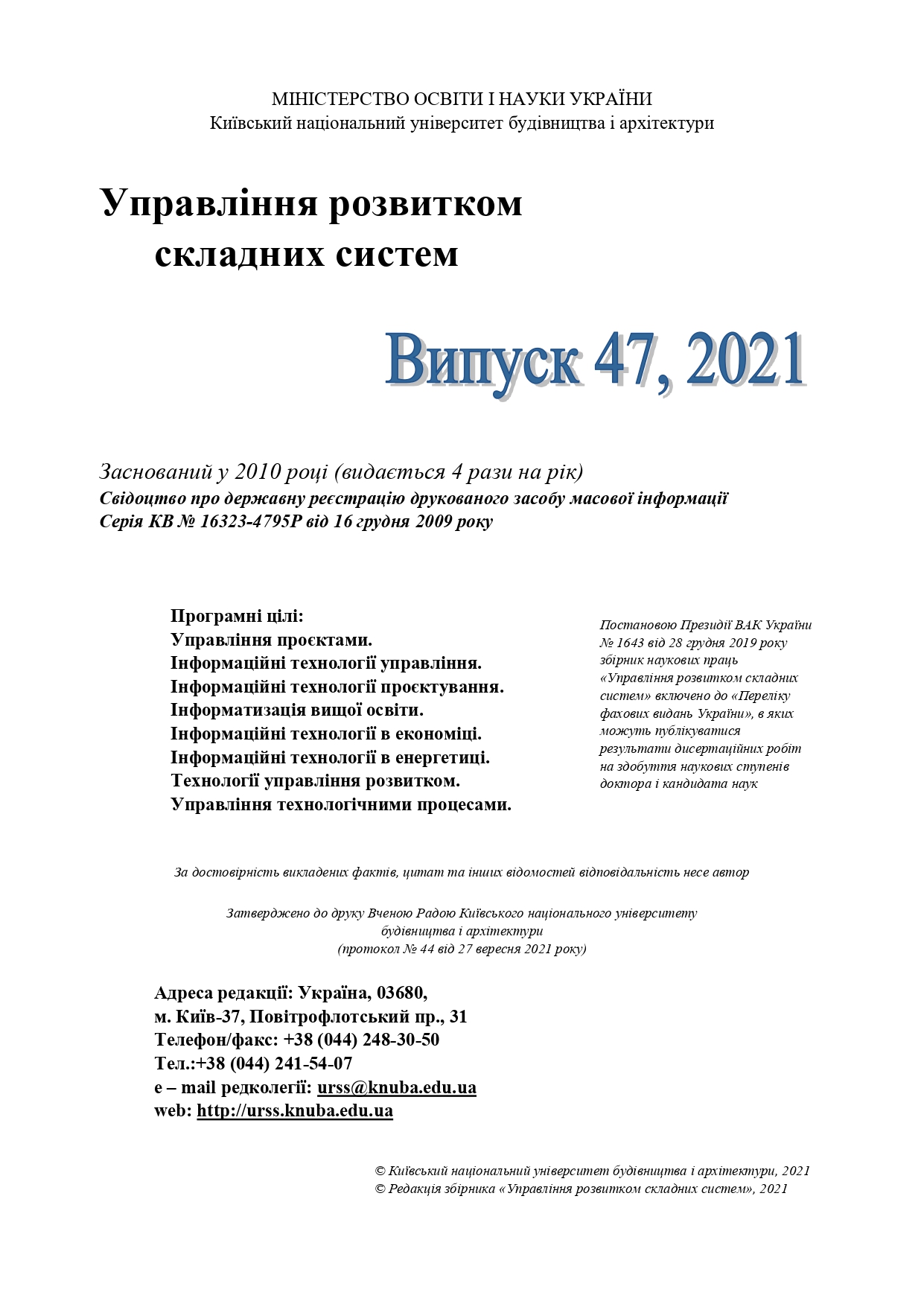USING MOBILE CROWD SENSING FOR SOCIAL DISTANCING REAL-TIME NAVIGATION
DOI:
https://doi.org/10.32347/2412-9933.2021.47.57-62Ключові слова:
social distancing navigation, e-tourism recommender systems, urban route planning, crowd prevention management, smart cityАнотація
The study focuses on current trends in the use of smartphones and other smart devices to provide information support to users in a COVID pandemic. The perspective adaptations of mobile crowd sensing (MCS) information technologies to ensure the social distance of pedestrians while walking through the city are described. Specifics of navigation and data collection from users' smartphone’s sensors in the case of open space and in large buildings (stations, hospitals, government agencies and other social infrastructure) navigation are considered. A project approach to the creation of a mobile recommender application for a safe walking route in real time with the support of social distancing based on hybrid tourist recommender systems, mobile crowd sensing and big data analysis is proposed. The main problems and challenges presented with the implementation of such a project are outlined. Safe navigation of users in large rooms is also an increase in the urgent task. After all, even the best strict guarantees of the ban do not make it possible to determine the assessment of health care facilities, construction of social, educational, trade, transport infrastructure, etc. The main problems and stages of data extraction from the user 's device are considered, as well as the approaches to the organization of user navigation within the city are analyzed: both indoors and outdoors. The algorithm was proposed for building a safe route recommendation with mobile crowd sensing application with multi-criteria context evaluation for social distancing real-time navigation.
Посилання
Hou, F. et al. (2019). Mobile Crowd Sensing: Incentive Mechanism Design. SpringerBriefs in Electrical and Computer Engineering, https://doi.org/10.1007/978-3-030-01024-9_1.
Bozzon, A., Fraternali, P., Galli, L., Karam, R. (2013). Modeling crowdsourcing scenarios in socially enabled human computation applications. Journal on Data Semantics, 1–20
Yang, D., Xue, G., Fang, X., Tang, J. (2012). Crowdsourcing to smartphones: incentive mechanism design for mobile phone sensing. Proceedings of the 18th annual international conference on Mobile computing and networking, ACM, pp. 173–184.
Kim, J., Rasouli, S., J.P., H. (2017). Timmermans “Investigating heterogeneity in social influence by social distance in car-sharing decisions under uncertainty: A regret minimizing hybrid choice model framework based on sequential stated adaptation experiments”. Transportation Research, C 85, 47–63, http://dx.doi.org/10.1016/j.trc.2017.09.001.
Artemenko, O., Kunanets, N., Pasichnyk, V., Kut, V., Lozytskyy, O. (2021). Mobile location-based social distancing recommender system with context evaluation: A project approach. CEUR Workshop Proceedings, 2851, 334–343.
Hu, N., Zhong, J., Zhou, J. T., Zhou, S., Cai, W. & Monterola, C. (2018). Guide them through: An automatic crowd control framework using multi-objective genetic programming. Applied Soft Computing, 66, 90–103. doi:10.1016/j.asoc.2018.01.037.
Gonzalez, M. C., Hidalgo, C. A. & Barabasi, A.-L. (2008). Understanding individual human mobility patterns. Nature, 453(7196), 779–782.
Kantarci, B., Mouftah, H.T. (2014). Reputation-based sensing-as-a-service for crowd management over the cloud. Communications (ICC), IEEE International Conference , IEEE, pp 3614–3619.
Saddik, A. El et al. (2020). Connected Health in Smart Cities. Springer Nature Switzerland AG, 254.
Yang, Y. & Stienmetz, J. L. (2018). Big data and tourism planning. Information Technology & Tourism, 20(1-4), 189–190. doi:10.1007/s40558-018-0127-6.
Shen, Z., Li, M. (eds.). (2018). Big Data Support of Urban Planning and Management. Advances in Geographic Information Science, Springer International Publishing AG, 456. DOI 10.1007/978-3-319-51929-6_1.
Logesh, R., Subramaniyaswamy, V., Vijayakumar, V., et al. (2018). Efficient User Profiling Based Intelligent Travel Recommender System for Individual and Group of Users. Mobile Networks and Applications, DOI https://doi.org/10.1007/s11036-018-1059-2.
Ricciato, F., Lanzieri, G., Wirthmann, A., Seynaeve, G. (2020). Towards a methodological framework for estimating present population density from mobile network operator data. Pervasive and Mobile Computing, 68, 101263, https://doi.org/10.1016/j.pmcj.2020.101263.
Jeong, M.-G., Lee. E.-B., Lee, M., Jung, J.-Y. (2019). Multi-criteria route planning with risk contour map for smart navigation. Ocean Engineering, 172, 72–85.
Delic, A., Neidhardt, J., Nguyen, T. N., & Ricci, F. (2018). An observational user study for group recommender systems in the tourism domain. Information Technology & Tourism, 19(1-4), 87–116. doi:10.1007/s40558-018-0106-y.
Artemenko, O., Pasichnyk, V., Korz, H., Fedorka, P., Kis, Y. (2020). Using Big Data in E-tourism Mobile Recommender Systems: A project approach. Proceedings of the 1st International Workshop IT Project Management (ITPM 2020), pp. 194–204.
Ricci, F., Rokach, L., Shapira, B. (2015). Recommender Systems Handbook: Second Edition. Springer Science+Business Media New York, 1003.
Ryley, T. J., Zanni, A. M. (2013). An examination of the relationship between social interactions and travel uncertainty. J. Transp. Geogr., 31, 249–257.
Xiang, Z. & Fesenmaier, D. R. (2016). Big Data Analytics, Tourism Design and Smart Tourism. Tourism on the Verge, 299–307. doi:10.1007/978-3-319-44263-1_17.
Sigala, M., Rahimi, R. & Thelwall, M. (Eds.). (2019). Big Data and Innovation in Tourism, Travel, and Hospitality. doi:10.1007/978-981-13-6339-9.
Zhou, X., Chen, T., Guo, D., Teng, X. & Yuan, B. (2018). From one to crowd: a survey on crowdsourcing-based wireless indoor localization. Frontiers of Computer Science, 12(3), 423–450. doi:10.1007/s11704-017-6520-z.
##submission.downloads##
Опубліковано
Як цитувати
Номер
Розділ
Ліцензія
Авторське право (c) 2021 Volodymyr Pasichnyk , Nataliia Kunanets , Olga Artemenko , Pavlo Fedorka , Ruslan Nebesnyi

Ця робота ліцензується відповідно до Creative Commons Attribution-NonCommercial-NoDerivatives 4.0 International License.

